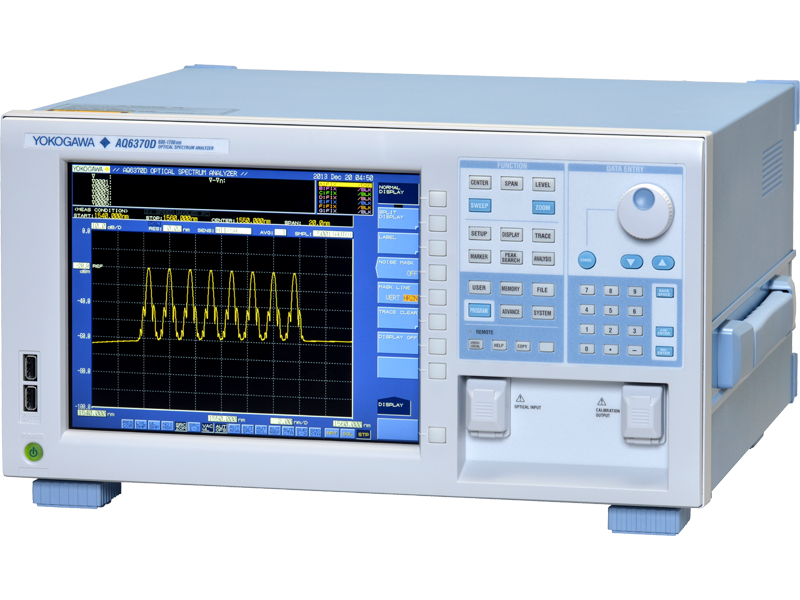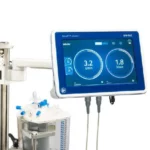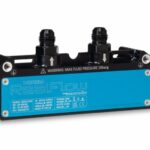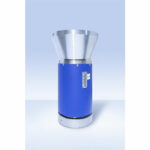
The European Space Agency (ESA) is using the precision of Yokogawa’s AQ6370D series optical wavelength meters to ensure accurate tuning of lasers used in Earth to space communications. The ESA operates a network of geostationary satellites known as the European Data Relay System (EDRS). These satellites communicate with a constellation of European Low Earth Orbit (LEO) satellites called Sentinels, used for Earth monitoring applications. The EDRS satellites use radio communication to upload the LEO satellites’ images and other data to terrestrial servers.
The challenge here is that the growing amount of information from LEO and geostationary satellites and from satellite constellations means that the available bandwidth from radio communication links will soon be too low to meet ESA’s data transfer needs.
The main solution to this problem is optical, laser-based communication, a technique already used to transfer data between the LEO satellites and the EDRS network. Optical communication is a proven technology on Earth and forms the backbone of the internet. However, optical communication in free space between the Earth and a satellite calls for special laser technology. This is because optical signals transmitted between the Earth and space are subject to interference from various sources, such as clouds or other weather phenomena.
In addition to this, optical signals in free space cannot be shielded from external sources of optical interference by the physical medium through which they travel, such as an optical fibre on Earth. Optical communication systems need to achieve a sufficient signal-to-noise ratio to maintain the link between transmitter and receiver. In the ESA’s EDRS, signals are transmitted at a very precisely specified infrared wavelength of 1064.625 nm (nanometers) ±11 pm (picometers), with almost zero variance in the peak wavelength. This allows the receiver to lock on to the transmitted narrowband signal and to eliminate interfering signals. With this technology, the EDRS satellite can operate even when the sun is in its line of sight.
With this in mind, the ESA is implementing optical Earth-to-satellite communications technology in its optical ground station (OGS) on the Spanish island of Tenerife and at the Aristarchos 2.2 m telescope at the Chelmos observatory in Peloponnese in Greece. Maintaining the exact transmitter wavelength is a critical part of the Aristarchos system’s operation, achieved by a technique where the transmitter laser is pumped by an 808nm laser diode to generate an accurate 1064.625 nm ±11 pm output. This wavelength is controlled accurately by adjusting the operating temperature of the transmitter laser.
Zoran Sodnik is the optical communications technology manager at the ESA’s telecommunications and integrated applications directorate, who is responsible for the optical communications system installed with the Aristarchos telescope. He said: “The EDRS operates at frequencies measured in multiples of terahertz and the transmitter and receiver wavelengths are no more than 28 Gigahertz apart. This means that the laser’s frequency has to be set with Gigahertz precision, and then measured with the same level of precision and accuracy”.
Working with Simac Electronics, a Netherlands-based supplier of connectivity and measurement technologies, the ESA selected the AQ6151B from Yokogawa to carry out this task. The instrument uses a Michelson interferometer, capable of measuring wavelength very accurately. In the AQ6151B, the high accuracy model in the AQ6150 Series, accuracy is specified at ±0.2 ppm. Available in three wavelength ranges, the Aristarchos installation uses the Wide Range version, covering wavelengths from 900 nm to 1700 nm. The AQ6150 series offers high speed, with the ability to acquire, analyze and transfer a measurement to a PC within 0.2 seconds. As well as high accuracy, the AQ6150 Series offers simultaneous measurement of up to 1024 wavelengths and handles input signal power as low as -40 dBm. The AQ6151B also has built-in analysis functions and requires no programming, making it easy to use.
Using the highly accurate AQ6151B to tune lasers, ESA expects that optical transmission could take on the burden of handling high bandwidth traffic, replacing radio communication as the primary means of sending and receiving data from satellites.
Sodnik continues: “The ESA has used Yokogawa instruments extensively in the past and has always found them to be extremely accurate and reliable. This latest installation at the Chelmos observatory called for extremely high accuracy. I had no hesitation in selecting a Yokogawa product – it has fully lived up to my expectations.”






